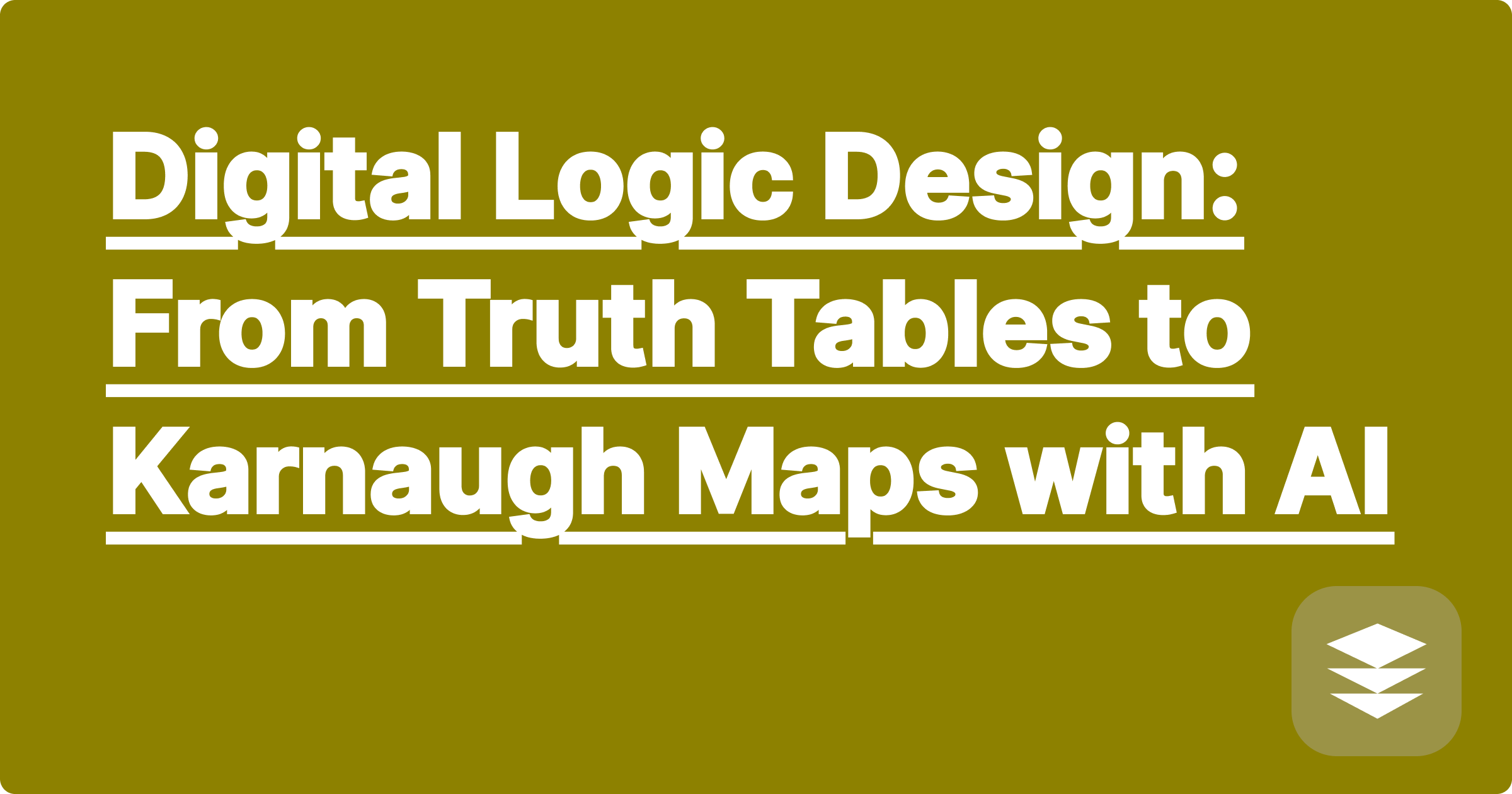
Welcome to the world of Digital Logic Design, where everything boils down to 1s and 0s. The concepts are straightforward, but the manual work can be incredibly tedious. You create a truth table, you painstakingly translate it into a Boolean algebra expression, and then you face the most dreaded task of all: simplification.
Simplifying a complex Boolean expression by hand is a puzzle prone to error. The Karnaugh Map (K-map) is a powerful visual tool for this, but creating and looping the groups correctly, especially for 5 or 6 variables, is a difficult skill to master. A single mistake in a loop can lead to a non-minimal circuit, costing you points and efficiency.
What if you could automate this entire process? What if you could input a truth table and instantly receive the most simplified Boolean expression and a perfectly optimized K-map? This is exactly what a K-map solver AI can do, and it's the ultimate tool for getting your digital logic design homework help.
Let's be honest, the "fun" part of digital logic is the design and problem-solving. The frustrating part is the manual grunt work.
A smart AI assistant like GPAI Solver can act as your personal digital logic expert, handling the tedious simplification so you can focus on the high-level design.
You can start from multiple points.
This is where you save hours of work.
[Image: A screenshot from GPAI Solver. On the left, a user inputs a list of minterms. On the right, the AI displays a perfectly drawn Karnaugh map with colored loops around the optimal groups, and below it, the final simplified Boolean expression. Alt-text: A K-map solver AI providing a visual solution for a digital logic design problem.]
You can even take it a step further.
TaskThe Manual MethodThe AI-Assisted MethodK-map CreationDrawing, labeling, and filling by hand. High risk of error. Instant and perfect generation.
GroupingSubjective, easy to miss the largest possible group.Algorithmically optimal.
Guarantees the most minimal solution.Deriving ExpressionReading the groups and writing the terms can be tricky.
Automatic and error-free.VerificationDifficult to know if your solution is truly the most simple.Provides a reliable "correct answer" to check your own work against.
"I spent a whole evening trying to simplify a 5-variable K-map for a homework assignment and I still wasn't sure if I had the best solution. I put the minterms into GPAI Solver and it gave me the perfect grouping and the final expression in 10 seconds. It also showed me a group I had completely missed. It's an incredible learning and verification tool."
Your digital logic course is meant to teach you about computer architecture, state machines, and how digital systems are designed. It's not meant to be a test of your ability to draw boxes and loop 1s. By using an AI to handle the tedious parts of Boolean simplification, you can focus your energy on the higher-level, conceptual aspects of digital design.
A: When used as a verification or learning tool, it's a smart study strategy. The recommended workflow is to always attempt the K-map yourself first. Then, use the AI to check your answer. This helps you find your mistakes (e.g., "Ah, I could have made that group of 4 into a group of 8 by wrapping around the edges!") and learn from them.
A: Yes. You can specify the "don't care" minterms in your prompt, and the AI will correctly place 'X's on the K-map. It will intelligently include them in groups only when doing so leads to a simpler final expression.
A: Yes. You can specify that you want the simplified Product-of-Sums expression. The AI will then group the 0s on the K-map and derive the corresponding POS solution, providing you with the dual form of the logic.
Stop getting bogged down in the manual mechanics of logic simplification. Leverage an AI assistant to be your personal K-map expert. You'll complete your homework faster, with more accuracy, and gain a deeper understanding of how to turn a complex problem into an elegant and efficient digital circuit.
Ready to simplify your digital logic design homework?
[Try GPAI Solver today. Get instant help with K-maps, Boolean algebra, and more. Sign up now for 100 free credits and build with confidence.
Circuit Analysis Made Simple: An AI Assistant for Nodal and Mesh Analysis
Understanding Electromagnetics: How AI Can Visualize Fields and Waves
Digital Logic Design: From Truth Tables to Karnaugh Maps with AI
Signals and Systems: How AI Can Help You with Fourier and Laplace Transforms
Your Guide to Semiconductor Physics: How AI Simplifies Band Diagrams
How to Write Verilog or VHDL Code Faster with an AI Assistant
Mastering Microelectronics: An AI Tool for Amplifier and Filter Design
The ECE Student's Ultimate Cheatsheet: Combining Circuits, Signals, and Code
Can AI Help Me with My PSpice / LTspice Simulation?
How to Prepare for the FE Electrical and Computer Exam with AI